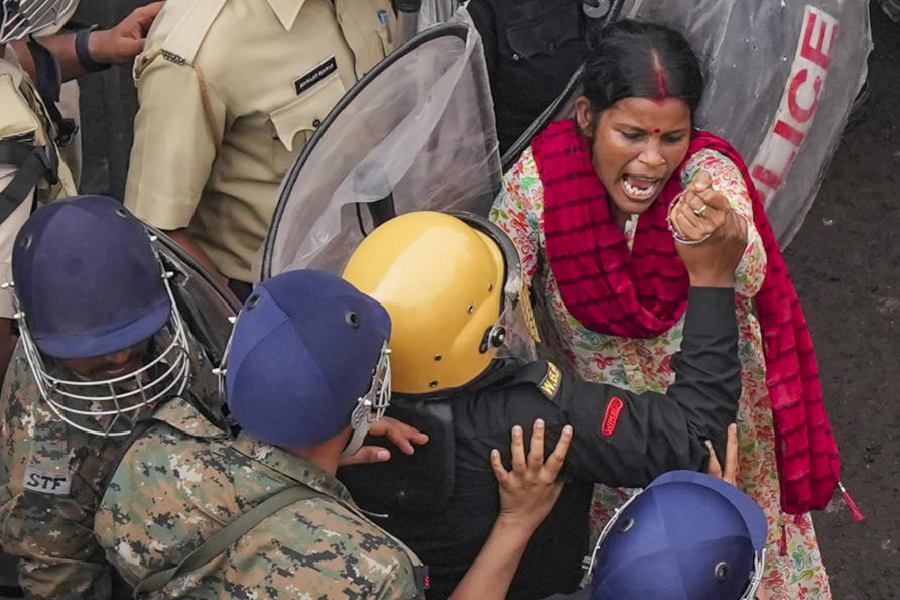The mask had come off first. That the ‘non-political’ protest called by ‘students’ had an express political underbelly had been revealed when, during a press conference a day before the march, one of the organisers let it be known that he was a member of the Rashtriya Swayamsevak Sangh. The fig leaf of a ‘peaceful’ protest fell off in the course of the violent demonstrations that followed: Calcutta, thus, witnessed vandalism and lumpen behaviour, reminiscent of mobs rather than student protesters, in the name of justice for a woman doctor who had been raped and killed. The targets were the state administration and the police — the latter exercised restraint in the face of provocation. But life in the city was adversely affected with educational institutions bearing the brunt. The Bharatiya Janata Party called a bandh and promised legal and medical help for those arrested during the agitation. This goes on to show, once again, that a disproportionate number of student demonstrators were, in fact, foot soldiers of the saffron party.
Calcutta has had a long and dismal association with unruly street protests by political parties of all stripes. But the question that needs to be asked in this instance concerns the consequences of organic public protests being hijacked by politics. The nation has witnessed several instances of wily political parties supporting, infiltrating and ultimately taking over public protests from the aam aadmi: the outpouring of collective rage and resistance in light of the gangrape in Delhi in 2012 is one example. Is this chapter of collective condemnation in Calcutta headed the same way? If that is to be the case, the first likely casualty is going to be justice itself. This is because political parties, unlike agitations by the masses, are more interested in deriving political dividends out of public discontent. Justice is often of secondary, rather than primary, importance to their agenda. It is heartening that the protesting junior doctors, perhaps aware of the need to distance their movement from politics, had desisted from joining the protests on Tuesday. The violence that was witnessed during the demonstration has the potential of clouding — deflecting — attention from the central issue of dispensing justice to the woman doctor. Such a marginalisation of the cause should not be allowed to take place. The protest must remain apolitical — a movement of and by the people. That way, it could have a greater impact in terms of scale and effect.











